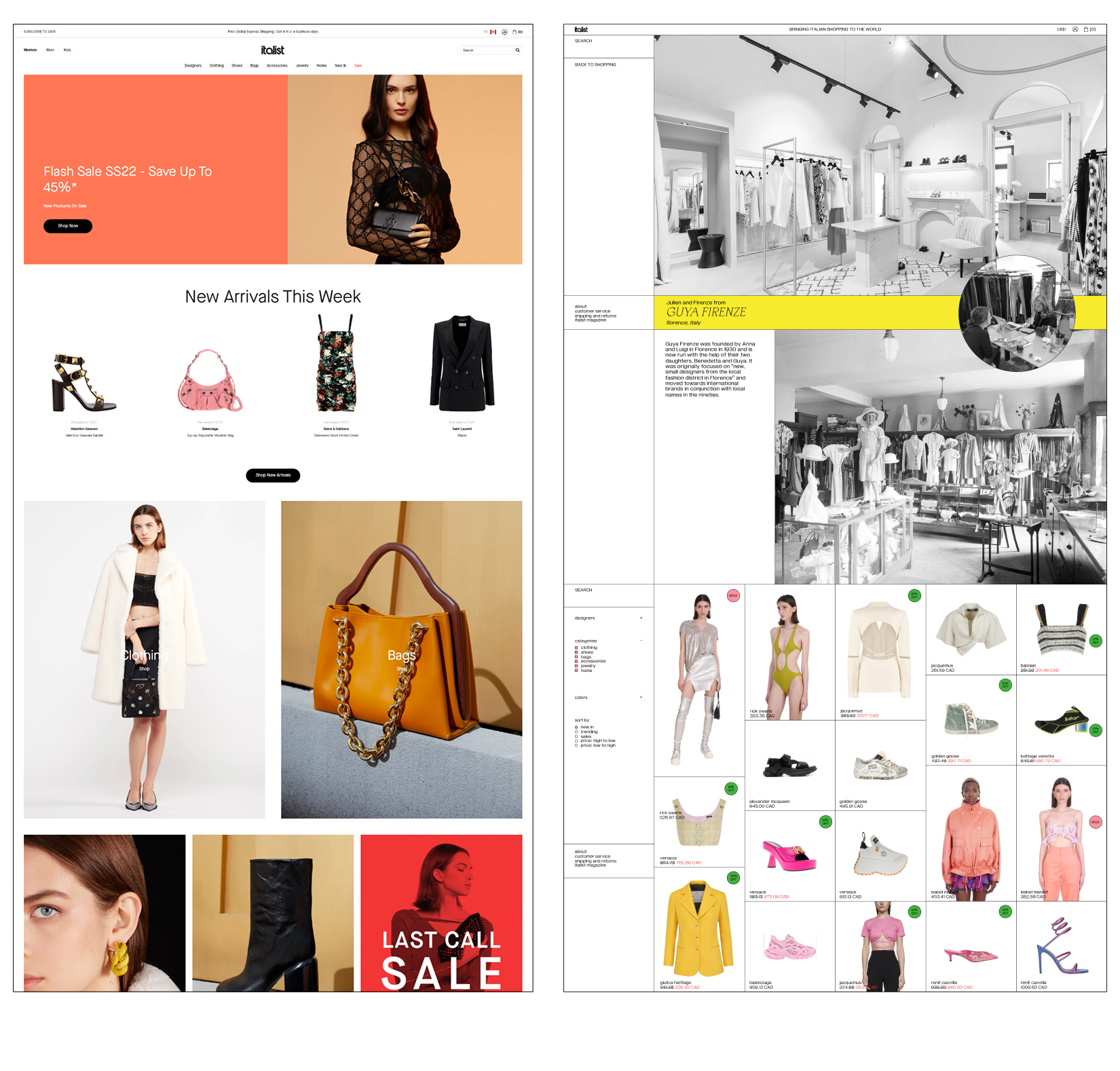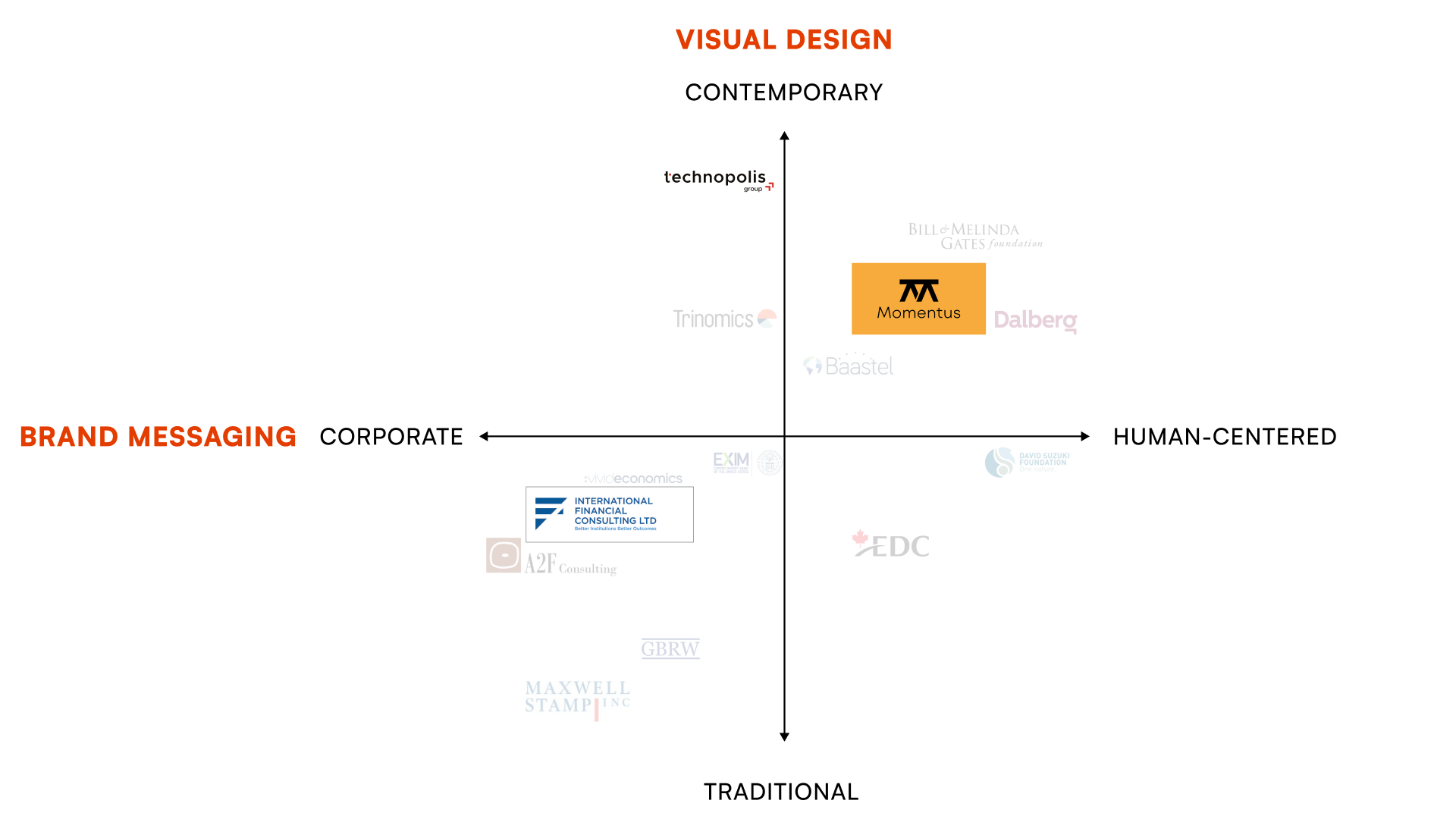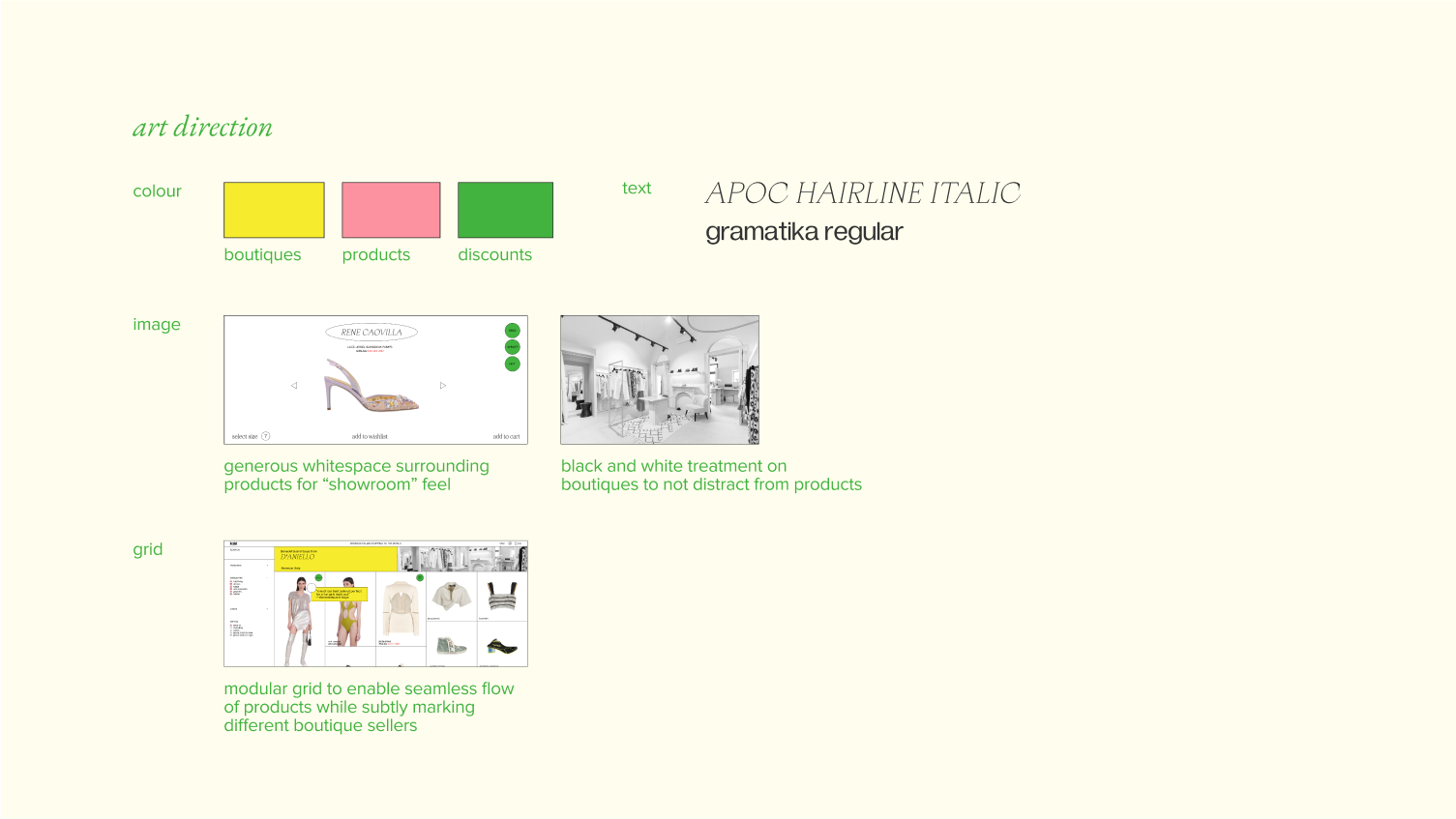Designing a concept experience that bridges Italist’s promise and what customers actually receive.
Client:
Italist, an online luxury fashion based retailer.
Context:
Senior Experience design course, not affiliated with Italist brand.
Project Scope:
Complete brand repositioning including research, brand identity, renaming, visual identity design, and a website concept.
Italist positioned itself as a gateway to authentic Italian boutiques, but its site leaned on constant discounts, making it feel like a warehouse instead of a luxury destination. Navigation was felt cluttered, and the brand’s most valuable unique selling proposition — its Italian boutiques — were nearly invisible.
Through interviews with luxury fashion customers and secondary research, we learned while price matters, luxury customers care more about finding pieces that reflect their identity and feeling connected to the story behind the brand. We wanted to restore that emotional connection, designing an experience that balanced discovery and storytelling without overwhelming users.

Left: Existing Italist homepage, captured during project, which puts emphasis on sale items and doesn't showcase the Italian Boutiques.
Right: Our redesign focused on showing products at the forefront, and enhancing the user experience by giving customer a glimpse into the Boutique store and it’s owner.
Our project initially focused on another luxury retailer, Luisaviaroma, but midway through the course, we saw a richer opportunity in Italist. The disconnect between its promise and user experience offered a clearer challenge to solve.
We used much of our earlier industry research — competitor mapping, audience expectations, and luxury retail insights — and redirected it toward Italist’s unique positioning. This allowed us to pivot quickly while still grounding our design direction in evidence.
By shifting focus from improving aesthetics to redefining content and storytelling, we aimed to reposition Italist around what truly set it apart: its network of independent Italian boutiques.
We reframed our challenge around a guiding question: "How might we reimagine Italist's digital experience so it feels as authentic and curated as its promise?"
Through secondary research and design sprint workshops, we learned insights into the decision making process for luxury fashion customers. Many customers approach shopping product-first, valuing ease and variety. However, what keeps them coming back is their relationship with the brand—the storytelling, heritage, and sense of exclusivity.
I led the synthesis of these insights into a content strategy that positioned boutique identity as the heart of the experience. The art direction evolved from this strategy, blending modern editorial style with Italian heritage to balance elegance and usability.

A competitive landscape matrix which captures our client's competitive space and illustrates where IFCL was prior to the rebrand in the bottom left quadrant, before achieving their target repositioning as Momentus in the upper right quadrant as more contemporary eith their visual design and human centered with their tone and messaging.
The redesign repositions Italist as the destination for boutique-driven luxury fashion. Instead of pushing constant sales, the experience highlights the authenticity and personality of each boutique. A few of the key decisions made:
Boutique Pages: Each boutique featured a narrative about its heritage for customers to connect to, paired with curated product selections that showcase the unique style of each boutique resembling the experience of seeing items displayed in a store.
Visual Identity: A serif–sans serif pairing to balance tradition and modernity; a warm, sophisticated palette inspired by Italian Boutiques; editorial layouts that invited exploration.
Content Design: Structured to support both product-first discovery and brand-first storytelling, allowing customers to browse by boutique.

Art direction for the rebrand.
The concept demonstrated how Italist could better align its digital presence with its brand promise. By highlighting boutique stories and curating product discovery, the experience felt more premium, personal, and trustworthy.
The design system was flexible enough to scale across thousands of boutiques while maintaining a sense of curation and authenticity. The result was a digital experience that reflected the emotional depth and trust that luxury shoppers expect.
This project underscored the importance of connecting brand promise with user experience. For Italist, loyalty came not from discounts, but from trust, clarity, and meaningful storytelling.
It also strengthened my ability to adapt strategically — using prior insights to tackle a new challenge, guiding my team toward a stronger, more concept-driven solution. I found my strength in connecting research, storytelling, and design into a cohesive, human experience.